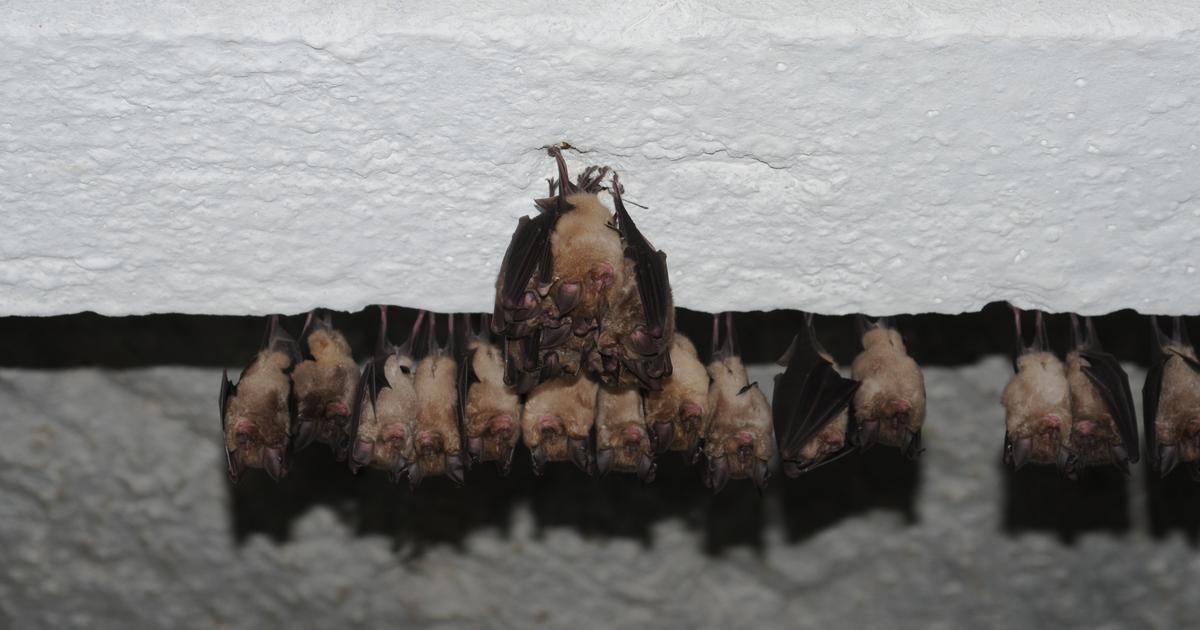Le Figaro Nantes
The black and white photo is not easy to decipher for an untrained eye. On the other hand, for experts, it constitutes proof. On April 25, in the town of Saint-Molf, bordering Guérande, the presence of an animal was immortalized by a "camera trap device" for monitoring wildlife and set up by the Loire-Atlantique Departmental Federation of Hunters.
Photo of the golden jackal taken on April 25 in Saint-Molf. Loire-Atlantique Hunters' Federation
This animal in question is a golden jackal indicate this Wednesday the services of the prefecture. "The observation was analyzed and validated by the OFB (French Office for Biodiversity, editor's note) and a group of international experts," she says. The golden jackal is a wild species of canid whose arrival and establishment in France are closely monitored by the authorities who collect on the ground clues of its presence (feces, urine, hair, photos and videos).
See alsoFungicide dumped in rivers: two similar accidents in less than a month in Loire-Atlantique and Vendée
Where does he mainly live?
The observation of the golden jackal in Loire-Atlantique is not a first in France. The oldest listed in France dates back to 2017. Since then, the animal has been observed in several departments (Deux-Sèvres, Bouches-du-Rhône, Essonne, Alpes-Maritimes and Finistère). "These observations concern isolated individuals not allowing, for the moment, to detect groups or evidence of reproduction in the country," note in a joint statement the prefecture of Loire-Atlantique and the OFB.
The golden jackal or Canis aureus of its Latin name is present over a vast area that extends from southern mainland Asia to Europe, passing through India, the Middle East and Turkey. Present in Europe, "mainly in the South-East (Bulgaria, Greece)" for 2000 years, it has begun a phase of colonization, since the 1960s, towards the west and north of the continent. "The presence of the species was detected in the 1980s in Italy and Austria, then in the 1990s in eastern Germany, since 2011 in Switzerland," summarizes the OFB.
"The jackal shows great plasticity in the use of media. It likes wetlands, marshes and river banks and is not bothered by human presence. On the other hand, it avoids areas with the presence of wolves and areas affected by significant snow, "it is also mentioned.
" READ ALSO Nantes : bitten by his dogs, a couple crammed twelve in an unsanitary housing
What does it look like?
The golden jackal can weigh 7-17 kilograms with a height at the withers of 45-50 centimeters. "It is distinguished from the fox by its larger size, slender silhouette linked to developed limbs, a short tail and its most often golden color," describes the OFB.
The golden jackal is a scavenger. Like the fox, it is an opportunistic predator that can hunt small prey (birds, reptiles, amphibians). It can also feed on "plant matter at the margin", says the OFB.
See alsoNear Nantes, a dozen wild boars seen in broad daylight in a suburban district
Is it possible to hunt it?
The answer is no. Based on a genetic study, the European Commission concluded in 2016 that the golden jackal cannot be considered an exotic species introduced by humans. "This species is therefore part of the European natural heritage and as such, is listed in Annex V of the Habitats Directive 92/43/EEC which requires Member States to ensure that its populations are maintained at a favourable conservation status," the authorities said in their joint statement.



